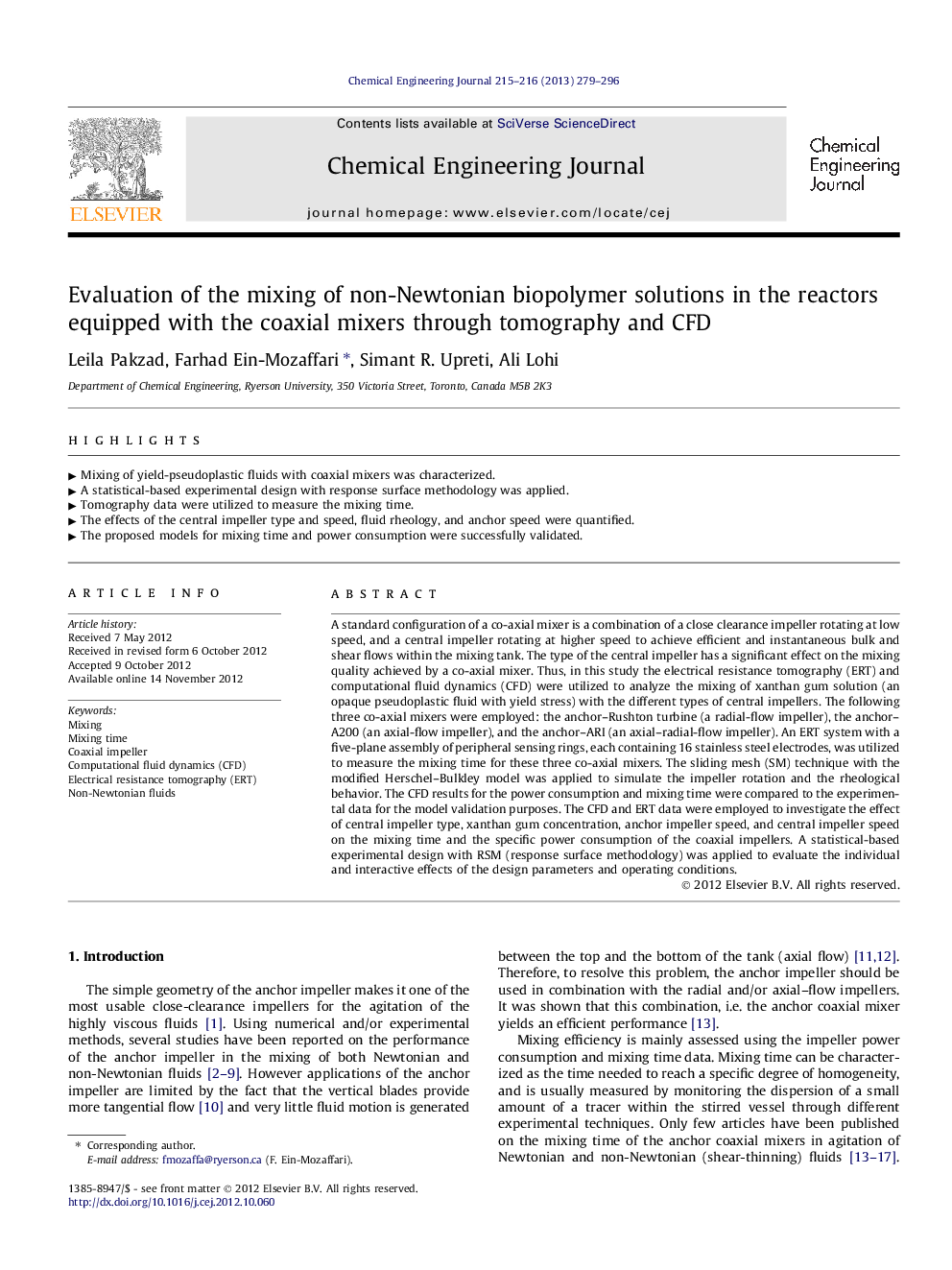| کد مقاله | کد نشریه | سال انتشار | مقاله انگلیسی | نسخه تمام متن |
|---|---|---|---|---|
| 149003 | 456425 | 2013 | 18 صفحه PDF | دانلود رایگان |

A standard configuration of a co-axial mixer is a combination of a close clearance impeller rotating at low speed, and a central impeller rotating at higher speed to achieve efficient and instantaneous bulk and shear flows within the mixing tank. The type of the central impeller has a significant effect on the mixing quality achieved by a co-axial mixer. Thus, in this study the electrical resistance tomography (ERT) and computational fluid dynamics (CFD) were utilized to analyze the mixing of xanthan gum solution (an opaque pseudoplastic fluid with yield stress) with the different types of central impellers. The following three co-axial mixers were employed: the anchor–Rushton turbine (a radial-flow impeller), the anchor–A200 (an axial-flow impeller), and the anchor–ARI (an axial–radial-flow impeller). An ERT system with a five-plane assembly of peripheral sensing rings, each containing 16 stainless steel electrodes, was utilized to measure the mixing time for these three co-axial mixers. The sliding mesh (SM) technique with the modified Herschel–Bulkley model was applied to simulate the impeller rotation and the rheological behavior. The CFD results for the power consumption and mixing time were compared to the experimental data for the model validation purposes. The CFD and ERT data were employed to investigate the effect of central impeller type, xanthan gum concentration, anchor impeller speed, and central impeller speed on the mixing time and the specific power consumption of the coaxial impellers. A statistical-based experimental design with RSM (response surface methodology) was applied to evaluate the individual and interactive effects of the design parameters and operating conditions.
• Mixing of yield-pseudoplastic fluids with coaxial mixers was characterized.
• A statistical-based experimental design with response surface methodology was applied.
• Tomography data were utilized to measure the mixing time.
• The effects of the central impeller type and speed, fluid rheology, and anchor speed were quantified.
• The proposed models for mixing time and power consumption were successfully validated.
Journal: Chemical Engineering Journal - Volumes 215–216, 15 January 2013, Pages 279–296